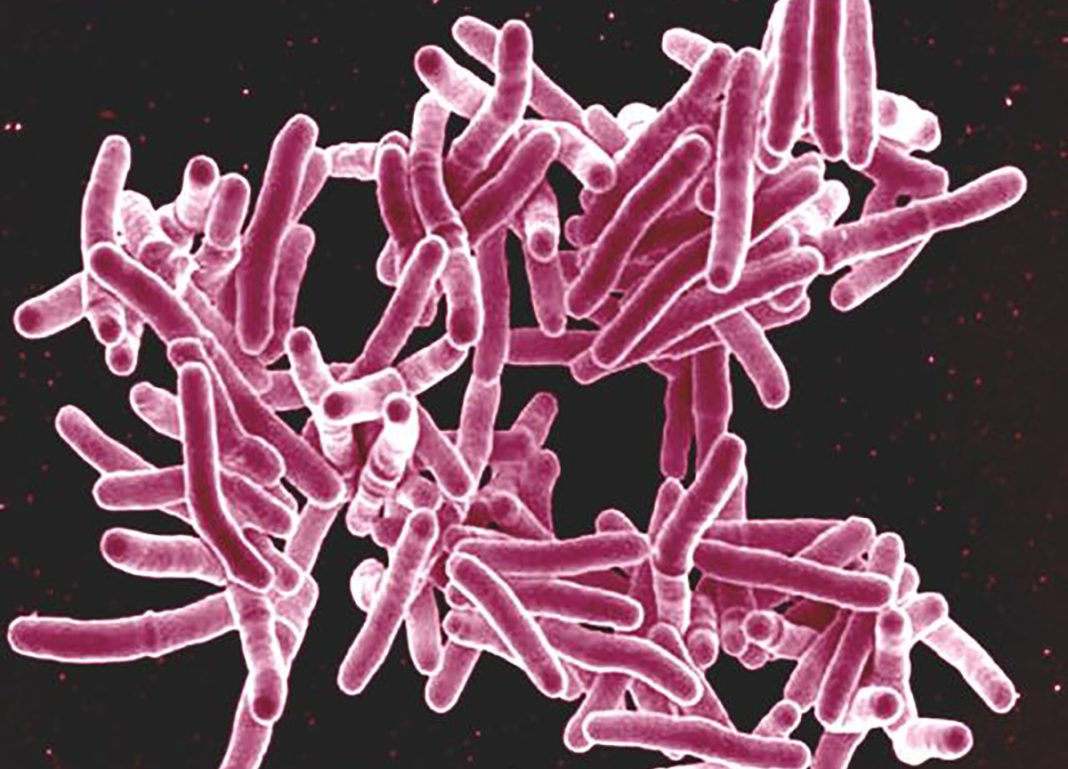Mycobacterium tuberculosis (MTB) is the infectious organism that causes the highest number of deaths around the world (the COVID-19 pandemic notwithstanding) with 1.5 million people dying each year from tuberculosis. There are 10 million new cases of tuberculosis each year, globally.
The ability of MTB to form snake-like cords was first noted nearly 80 years ago. Now, investigators have uncovered the biophysical mechanisms by which these cords form and demonstrate how several generations of dividing bacteria hang together to create these structures that enable resistance to antibiotics.
“Antibiotic therapy is the mainstay of treatment for tuberculosis infections, but therapeutic regimens are long and complicated, with an increasing threat of drug resistance,” said Richa Mishra, PhD, a post-doc in the lab of Vivek Thacker, PhD, at the University of Heidelberg Medical Facility. “There is a recognized need for host-directed therapies or therapies that inhibit specific virulence mechanisms that can shorten and improve antibiotic therapy.”
This work is published in Cell in the paper, “Mechanopathology of biofilm-like Mycobacterium tuberculosis cords.”
“Our work clearly showed that cord formation is important for infection and why this highly ordered architecture might be important for pathogenesis,” said Thacker, group leader at University of Heidelberg Medical Facility.
The researchers used a lung-on-chip model that allowed a direct look at “first contact” between MTB and host cells at the air-liquid interface in the lungs. This revealed that cord formation is prominent in early infection. The mouse model develops pathologies mimicking human tuberculosis, allowing the researchers to obtain tissue that could be studied using confocal imaging to confirm that cording also occurs early in infection in vivo.
The work yielded several new findings about how these cords interact with and compress the cell nucleus, how this compression affects the immune system and connections between host cells and epithelial cells, and how cord formation affects the alveoli in the lungs. More specifically, they showed that “cords in alveolar cells contribute to suppression of innate immune signaling via nuclear compression.”
The study also revealed how these cords retain their structural integrity and how they increase tolerance to antibiotic therapy. The authors emphasize that some of the main findings are: individual M. tuberculosis bacteria grow into high-aspect ratio cords in alveolar cells. The compression of host cell nuclei by mechanically resilient cords impairs immune responses. In addition, cords penetrate between cells, enabling bacterial dissemination to new tissue niches, and tight packing of bacteria within cords confers protection from antibiotic clearance.
“There is an increasing understanding that these mechanical forces influence cellular behavior and responses, but this aspect has been overlooked since traditional cell culture models do not recapitulate the mechanical environment of a tissue,” said Melanie Hannebelle, PhD, who was formerly at EPFL’s Global Health Institute and is currently a post-doc at Stanford University. “Understanding how forces at the cellular and tissue level or crowding at the molecular level affects cell and tissue function is therefore important to develop a complete picture of how biosystems work.
“By thinking of MTB in infection as aggregates and not single bacteria, we can imagine new interactions with host proteins for known effectors of MTB pathogenesis and a new paradigm in pathogenesis where forces from bacterial architectures affect host function,” said Thacker.
This study, the authors wrote, “provides a conceptual framework for the biophysics and function in tuberculosis infection and therapy of cord architectures independent of mechanisms ascribed to single bacteria.”
Future research will focus on understanding whether cord formation enables new functionality to known effectors of MTB pathogenesis, many of which are located on the MTB cell wall. In addition, it will look at the consequence of tight-packing on the bacteria within the clump and how this may lead to a protective effect against antibiotics.


